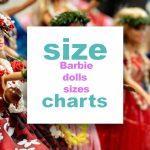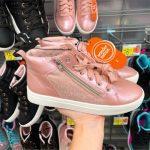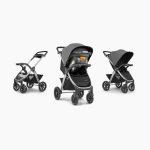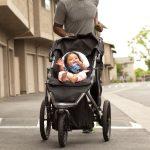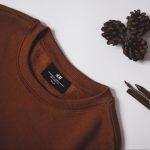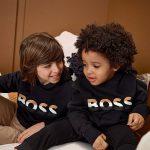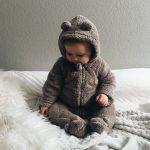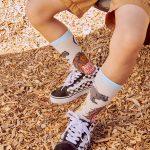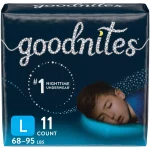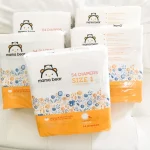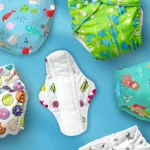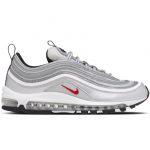Pacifier Size Guide for Kids: Does Pacifier Shape Or Size Matter?
Did you know that finding the ideal pacifier size for a baby can be challenging for many parents? Yes! It is among the most difficult responsibilities a parent will have to do. In light of this, it would be wise to consider the various pacifier sizes and shapes. In brief, you have pacifiers Size 1 for 0+ months, size 2 for 6+ months, and Size 3 for 18+ months old babies. The size and shape of your baby’s pacifier should correspond to their age and needs (skip straight to the Pacifier size chart).
The shapes of pacifiers—cylindrical, cherry, butterfly, or orthodontic—each have advantages and disadvantages. Moreover, the sizes of pacifiers are divided into three categories: tiny (6 months or less), medium (6 to 18 months), and large (18 months or more). For more information about pacifier sizes and shapes, keep reading.
Jump right into the Frequently Asked Questions
Related: Baby Jogger Car Seat Size Guide by age, height and weight, Graco Baby Strollers Size and Different Models by weight, Britax Strollers Size Guide and Different Models
Table of Content of Pacifier Sizing
- Pacifier size chart
- How to choose the right pacifier size
- Does pacifier size matter
- When do you change the pacifier size?
- Frequently Asked Questions
Pacifier Size Chart
Related: Graco Infant Car Seat Size and How to Install It, Shoe size for Babies and Toddlers, Adult Pacifier Size and Other Specifications
Baby requirements and preferences vary since they are different. Experiment with various forms and sizes to discover the ideal fit for your baby. The typical and standard recommendations are the sizes listed below. However, all sizes can be worn beginning at birth.
It all depends on what your baby prefers. Giving an infant a size three is not bad. However, given that the majority of babies like a smaller size, we have suggested the following:
- 0+ months for size 1
- 6+ months for size 2
- 18+ months for size 3
- One size for 0-3 years
All sizes can be used starting when your baby is born, and the age and size guidelines are merely meant to serve as a reference for you to follow.

Avent Pacifier Size Chart
Soothie
This one-piece pacifier, Soothie, is composed of medical-grade silicone. In contrast to a traditional pacifier, Soothie has a hole on the front that enables you to help the baby latch on while simultaneously providing the comfort of your finger.
Sizes: 0 to 3 months and 3 and up
Best for: Parents looking for a one-piece, durable silicone pacifier with added comfort.
| Avent Soothie Pacifier |
| One-piece silicone design |
| BPA-Free & Orthodontic |
| 0-3m |
Snuggle Soothie
The Philips Avent Soothie cuddle is the ideal first friend for a newborn since it is soft, cuddly, and adorable. It keeps Soothie, the pacifier nurses and medical professionals use to comfort newborns, nearby so that parents and babies may easily locate it. For simple cleaning, the Soothie and plush toy are removable. The plush toy also includes a second attachment method for pacifiers with ring handles.
Sizes: 0+months
Best for: Parents who want to keep Soothie close to their child and make sure she can easily be located in the diaper bag.
| Avent Soothie Snuggle |
| Soothe and plush toy |
| BPA-Free & Orthodontic |
| 0m+ |

Ultra Air Pacifier
This super air pacifier is ideal for you if your baby has sensitive skin! 84 percent of moms believe that it is made with a thin, breathable shield that allows for optimum air movement, keeping skin dry yet relaxing. You can feel confident in your decision because 98 percent of infants accept the nipple. The sterilizer/carrying case that Ultra air pacifiers are delivered in can be used to disinfect them in the microwave with water. Additionally, they are offered as long-lasting glow-in-the-dark decorations that are simple to locate at night.
Sizes: 0-6 months, 6-18 months, and 18+ months.
Best for: Parents who need a little extra assistance identifying pacifiers in the dark and parents of newborns with sensitive skin.
| Avent Ultra Air Nighttime Pacifier |
| BPA-Free & Orthodontic |
| With glow-in-the-dark button |
| 6-18m |
Nuk Pacifier Size Chart
Every age group and food type is catered to by the appropriate size of the teat from NUK. The child’s soothers and teats should grow with them to accommodate the mouth and jaw development at every stage of life. Between the ages of 0 and 36 months, a child’s palate evolves, and four different age groups have acquired teat sizes.
The NUK Size System offers two teat sizes with various-sized holes:
| Size 1 | Size 2 |
| 0-6 months | 6-18 months |
The hole sizes S, M, and L are ideal for breast milk, formula, and thicker feeds (puree, reflux formula).
| Size 1 | Size 2 | Size 3 | Size 4 |
| 0-2 months | 0-6 months | 6-18 months | 18-36 months |
Both 0-6 months and 6-18 months sizes are offered for all NUK Soothers. For especially fragile newborns and light, the NUK Genius Soother is available in a unique size, 0-2 months. We also manufacture a soother sized 18-36 months for infants who are not yet ready to give up the soother.
How To Choose The Right Pacifier Size
Related: Infant Car Seat Size Explained in Detail by age, weight & height, Britax car seat size chart by model, weight and age
When it comes to selecting the best pacifier, your baby’s physician and a family dentist can offer assistance and advice, but here are a few things you might want to take into account:
The pacifier’s design: The pacifier should ideally be made of one solid piece without any moving parts, a liquid inside, or integrated technology.
The pacifier’s dimensions: Select a size depending on your baby’s age. Additionally, pay attention to how big the shield extends from the nipple to the ring. It needs to be at least 1.5 inches in diameter to lessen the risk of choking.
The pacifiers’ construction: Additionally, stay away from any pacifiers that hook onto your baby’s crib, attach to their hands or neck, or cling to their body in any way.
Learn more about how to choose the pacifier size for your baby (video)
Does Pacifier Size Matter?
Related: Huggies Size Chart for all ages by type (size charts included), Pampers Size Chart for all ages by type (size charts included), Breast shield Sizing Guide – Choose The Right Size Nipple Shield
Pacifiers exist in many sizes, just like clothing and bottles; however, it might not be as clear when your kid has outgrown his favorite pacifier as it is when he has outgrown his nicest pajamas. He might suck the shield and nipple into his mouth if the pacifier is too small, causing him to choke; if it is too big, he will spit it out.
You should choose the appropriate size pacifier based on your baby’s age regardless of the brand and kind of pacifier you decide on. For instance, different Philips Avent pacifier alternatives are divided into 0-6 months, 6-18 months, and 18+ months due to the variation in shield sizes. The extremely popular Philips Avent Soothie, which you probably received at the hospital, is available in two sizes: 0-3 months and 3-18 months.

When Do You Change Pacifier Size?
Related: Diaper size by kids age with easy to use size charts and tips, Baby crib size chart for the best sleeping experience of your newborn
In general, you should follow the pacifier package’s age recommendations. Keeping a close check on your child’s use of the smaller pacifiers is important since a too small pacifier might cause choking. If your child refuses the larger pacifier, it is possible that he is not yet ready to move up.
Though your baby’s mouth is the same size (or bigger) as the pacifier shield, you should introduce the larger size pacifier even if your infant is not yet of the size change age.
Frequently Asked Questions
1. Does the size of a pacifier matter?
Yes. The ability of your child to hold the pacifier in his or her mouth properly is the most critical part. There is a definite difference in the shield size and the teat, particularly with the pacifiers for newborns, 0–6 months, and 6+ months.
2. Do you need to size up the pacifier?
The size is typically not printed on the actual pacifier, which is unfortunate, but paying attention is critical because using the incorrect size can result in choking. In addition to age, there are other indicators that it’s time to size up, such as the pacifier’s post-use imprint on your baby’s cheeks.
3. How to tell the size of a pacifier?
For infants of various ages, pacifiers are available in various sizes. Onesize for 0-3m, size 1 for 0+m, size 2 for 6+m, and size 3 for 18+m. Use the pacifier according to the recommended age range at all times because an older infant could be able to fit one designed for newborns in their mouth and choke.
4. When to change pacifier size?
Even if they are connected to a specific binky, not all children will accept your pacifier change. However, you’ll size your child again by the time they’re six months old. After one year, there is a different size for children up to three years old.
5. What size pacifier do I need?
Depending on your baby’s age, select a size. Additionally, pay attention to how big the shield is that extends from the nipple to the ring. It needs to be at least 1.5 inches in diameter to lessen the risk of choking.
6. Can a 6-month-old use a 0-3 month pacifier?
A pacifier that fits a newborn will be too tiny for a 6-month-old because babies develop so quickly.
7. Can a newborn use a 6-month pacifier?
You can start giving your child a pacifier as early as three months or six months old. Pacifiers can be used from birth at any age.
Conclusion
The ideal pacifier is the one your child prefers. Sizing plays a crucial role. There are also certain strategies you may employ to raise the likelihood that your infant will enjoy the pacifier you select for him or her. Whatever pacifier you decide on, be sure the nipple has adequate ventilation. According to some pediatric dentists, Pacifiers without this airflow may impair a baby’s developing palate.
Most pediatricians concur that a baby doesn’t notice too much of a difference in the shape of “orthodontically” touted pacifiers. But if buying one of these pacifiers makes you feel more at ease, just look at the packaging to see the specifics of the design.
Additionally, you want to check that your pacifier is secure and primarily constructed of natural materials. The risk of choking when using pacifiers can be significantly decreased by ensuring that your pacifier is manufactured out of a single piece of solid plastic. Additionally, you want to ensure that the pacifier you select is BPA-free and manufactured entirely of silicone (as far as the nipple is concerned).
If you have any questions, feel free to leave comments or questions.
Picture in this post is by Alexander Grey on Unsplash
Related to Pacifier Size
- Kids Belt Size Chart
- Barbie Doll Size : What are different sizes of Barbie ?
- US Kids Clothes Size Chart : What are kids sizes in US – UK – EU ?
- Pull & Bear Kid’s Size Charts
- Dolls Size: What Are the Different Sizes of Dolls?
- Wonder Nation Shoes Size Charts
- European Boys’ Clothing Sizes to EU, UK
- European Girl’s Clothing Sizes to US, UK
- Jumpsuit Size Chart for Adults and Kids
- Chicco Baby Stroller Size Guide
- What Size of Baby Jogger Stroller Do I Need? (Size Guide)
- H&M Baby & Kids Sizes
- US Toddler Clothing Size and Measurements
- HUGO BOSS Kids Size Charts
- Under Armour Boys’ Size Charts
- Baby Romper Size Guide
- Kids Socks Size Chart by age: What are sock sizes for boys & girls
- Goodnites Size Chart: Find the Best Diaper Size
- Mexican Kids’ Sizes of Clothing – Mexico to US
- Mama Bear Size Chart of Diapers
- OVS Size Chart for Adults and Kids
- Charlie Banana Diapers Size
- Nike Air Max 97 Size Chart : Is the Air Max 97 true to size ?



